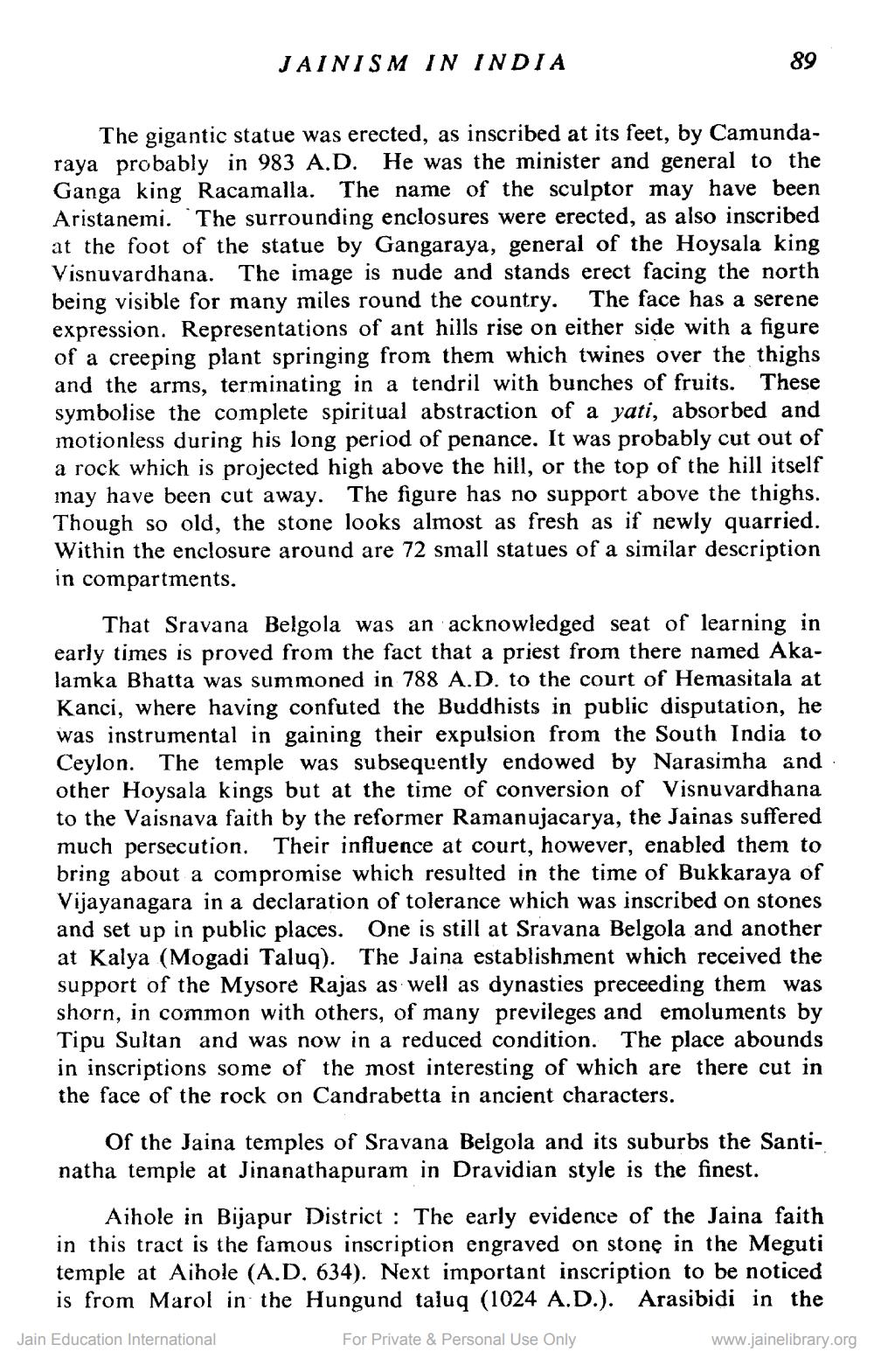________________
JAINISM IN INDIA
89
The gigantic statue was erected, as inscribed at its feet, by Camundaraya probably in 983 A.D. He was the minister and general to the Ganga king Racamalla. The name of the sculptor may have been Aristanemi. The surrounding enclosures were erected, as also inscribed at the foot of the statue by Gangaraya, general of the Hoysala king Visnuvardhana. The image is nude and stands erect facing the north being visible for many miles round the country. The face has a serene expression. Representations of ant hills rise on either side with a figure of a creeping plant springing from them which twines over the thighs and the arms, terminating in a tendril with bunches of fruits. These symbolise the complete spiritual abstraction of a yati, absorbed and motionless during his long period of penance. It was probably cut out of a rock which is projected high above the hill, or the top of the hill itself may have been cut away. The figure has no support above the thighs. Though so old, the stone looks almost as fresh as if newly quarried. Within the enclosure around are 72 small statues of a similar description in compartments.
That Sravana Belgola was an acknowledged seat of learning in early times is proved from the fact that a priest from there named Akalamka Bhatta was summoned in 788 A.D. to the court of Hemasitala at Kanci, where having confuted the Buddhists in public disputation, he was instrumental in gaining their expulsion from the South India to Ceylon. The temple was subsequently endowed by Narasimha and other Hoysala kings but at the time of conversion of Visnuvardhana to the Vaisnava faith by the reformer Ramanujacarya, the Jainas suffered much persecution. Their influence at court, however, enabled them to bring about a compromise which resulted in the time of Bukkaraya of Vijayanagara in a declaration of tolerance which was inscribed on stones and set up in public places. One is still at Sravana Belgola and another at Kalya (Mogadi Taluq). The Jaina establishment which received the support of the Mysore Rajas as well as dynasties preceeding them was shorn, in common with others, of many previleges and emoluments by Tipu Sultan and was now in a reduced condition. The place abounds in inscriptions some of the most interesting of which are there cut in the face of the rock on Candrabetta in ancient characters.
Of the Jaina temples of Sravana Belgola and its suburbs the Santinatha temple at Jinanathapuram in Dravidian style is the finest.
Aihole in Bijapur District: The early evidence of the Jaina faith in this tract is the famous inscription engraved on stone in the Meguti temple at Aihole (A.D. 634). Next important inscription to be noticed is from Marol in the Hungund taluq (1024 A.D.). Arasibidi in the For Private & Personal Use Only
Jain Education International
www.jainelibrary.org




